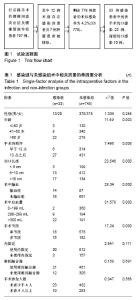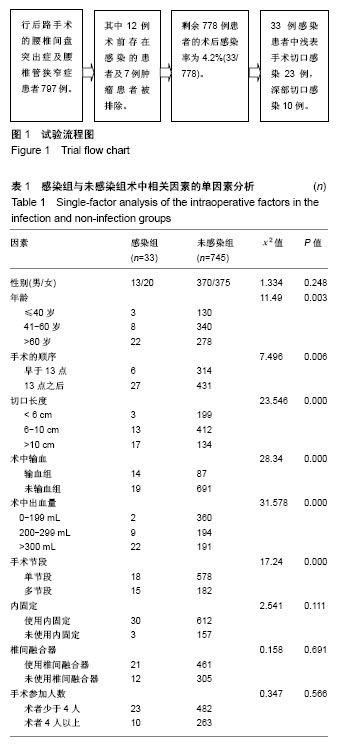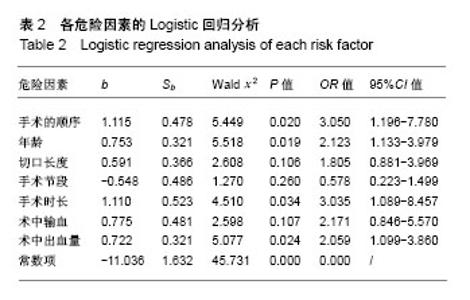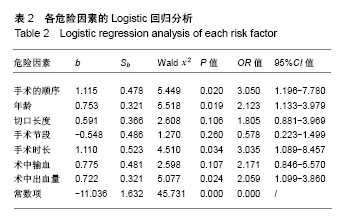| [1] 黄瑞娟. 医院感染信息化建设现状与发展趋势[J]. 医疗装备, 2013,26(7):56-58.[2] Abdul-Jabbar A, Takemoto S, Weber MH, et al. Surgical site infection in spinal surgery: description of surgical and patient- based risk factors for postoperative infection using administrative claims data. Spine (Phila Pa 1976). 2012;37(15):1340-1345.[3] 许晓秋,张栋.骨科手术部位感染率及危险因素的回顾性调查[J]. 中国感染控制杂志,2010,9(2):109-111.[4] Veeravagu A,Patil CG,Lad SP, et al. Risk factors for postoperative spinal wound infections after spinal decompression and fusion surgeries. Spine (Phila Pa 1976).2009;34(17):1869-1872. [5] 屈伟俊,孙建军,李跃红.脊柱手术后切口感染的危险因素研究[J]. 中华医院感染学,2013,23(9):2105-2106.[6] Gruskay J, Kepler C, Smith J, et al. Is surgical case order associated with increased infection rate after spine surgery? Spine (Phila Pa 1976). 2012;37(13):1170-1174.[7] Lidwell OM. Clean air at operation and subsequent sepsis in the joint. Clin Orthop Relat Res. 1986;211:91-102.[8] Hambraeus A. Aerobiology in the operating room-a review. J Hosp Infect. 1988;11( suppl A):68-76. [9] 张新芳,江喜昌,刘新立,等.医疗单位手术室微生物动态变化对医院感染影响的探讨[J]. 中国感染控制杂志,2004, 3(2):181-184.[10] 李平,郭志红,薛健.医用快速灭菌器对骨科器械灭菌效果观察[J]. 中国消毒学杂志,2005,22(2):176-178.[11] Leonard Y, Speroni KG, Atherton M, et al. Evaluating use of flash sterilization in the OR with regard to postoperative infections. Aorn J. 2006; 83: 672-680. |



